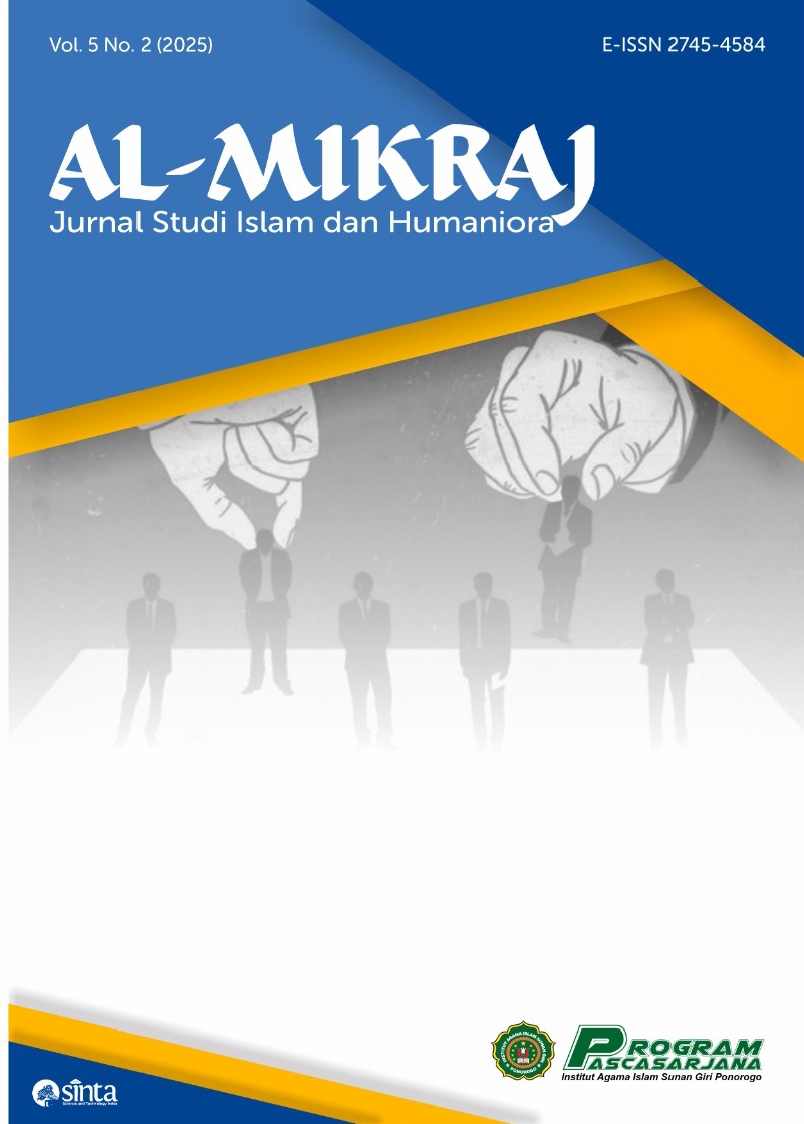Penerjemahan Frase Kolokasi Dalam Al-Qur'an
DOI:
https://doi.org/10.37680/almikraj.v5i2.7567Keywords:
Collocation, Arabic, translating, QuranAbstract
This study aims to analyze Arabic collocation patterns in relation to Quranic translation accuracy and to investigate effective strategies and contextual approaches compared with literal approaches in the translation process. The study employs qualitative research methods utilizing linguistic analysis and bibliographic approaches to examine Quranic texts and their various translations, with particular focus on collocation analysis and inter-lexical semantic relationships. The research yields three principal findings. First, collocation translation demonstrates three primary influence patterns: semantic distortion patterns, wherein collocations with non-compositional meanings undergo semantic distortion of up to 65% when rendered literally. Second, the "Adaptive Multi-Strategy Approach" proves most efficacious as a translation strategy. Third, concerning collocation translation quality evaluation frameworks, the study develops the "Collocation Translation Quality Assessment (CTQA) Framework" comprising four dimensions: the Semantic Preservation Index (SPI) evaluates denotative and connotative meaning retention; the Theological Accuracy Quotient (TAQ) assesses conformity with authoritative theological interpretations; the Cultural Sensitivity Measure (CSM) gauges responsiveness to source and target cultural contexts; and the Readability and Naturalness Score (RNS) measures target language appropriateness. Quranic translation constitutes a complex process necessitating comprehensive understanding of linguistic, contextual, and cultural elements. Through consideration of collocations, context, and pragmatic dimensions, translators can produce renditions that are not merely accurate but also semantically rich and relevant to contemporary readers. This approach represents both a challenge and a fundamental key to achieving deeper comprehension of the sacred Quranic text.
Downloads
Published
How to Cite
Issue
Section
License
Copyright (c) 2025 Sri ana, Yufridal Fitri Nursalam

This work is licensed under a Creative Commons Attribution-NonCommercial 4.0 International License.








